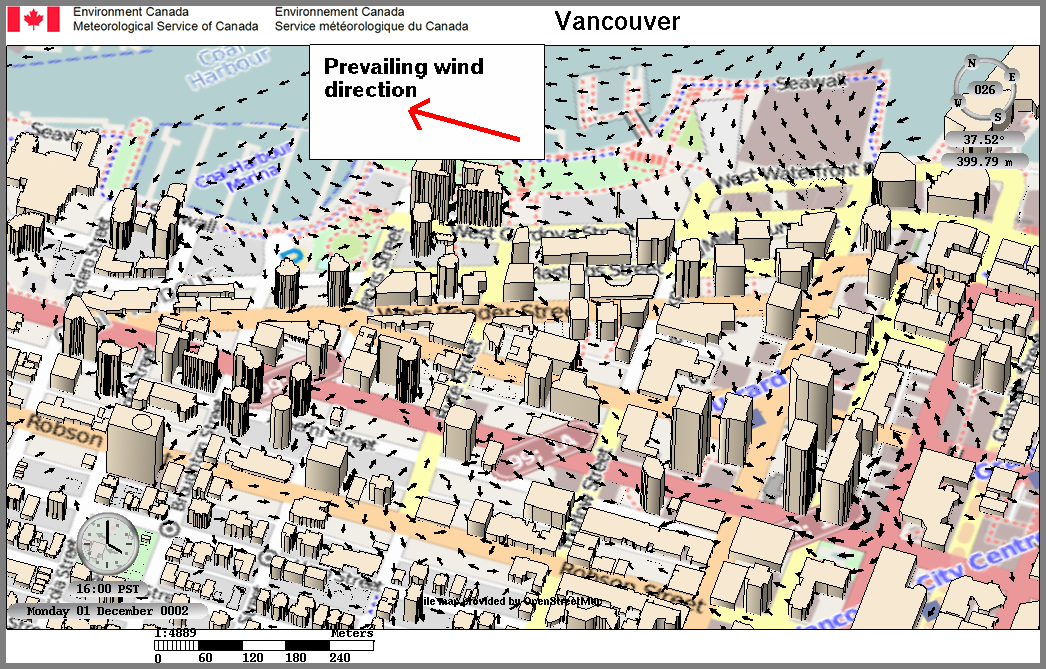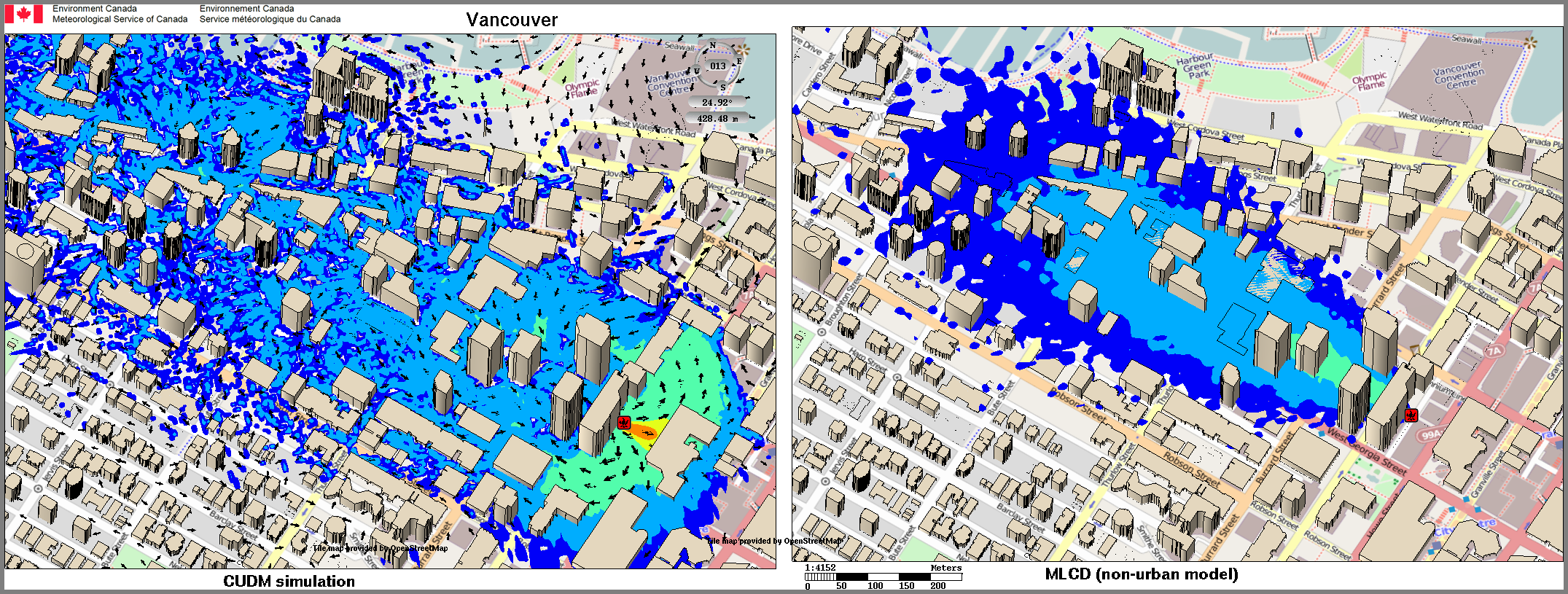Training on atmospheric dispersion in urban environments
8. Application of the CUDM System to hypothetical scenarios in some Canadian cities
VANCOUVER

Downtown Vancouver - Scenario 1: Animation of a CUDM simulation. The street-level emission, lasting 15 minutes,
contained 100,000 particles. The recirculation against the building beside the emission causes the material to initially
move opposite to the prevailing southeasterly wind direction.
Enlarge the animation

Downtown Vancouver - Scenario 1: Street level wind (black arrows) for the same scenario as (1). Enlarge The figure

Downtown Vancouver - Scenario 1: Comparison of the CUDM simulation (left) and the same scenario modeled by MLCD, a non-urban model (right). The deflection of the CUDM plume against the prevailing wind direction, the greater width from lateral dispersion along side streets, and the transport of the material upstream of the source location, is in contrast to the plume of MLCD, which does not take into account the effect on the flow of buildings. Enlarge the figure
<< Previous | >> Next